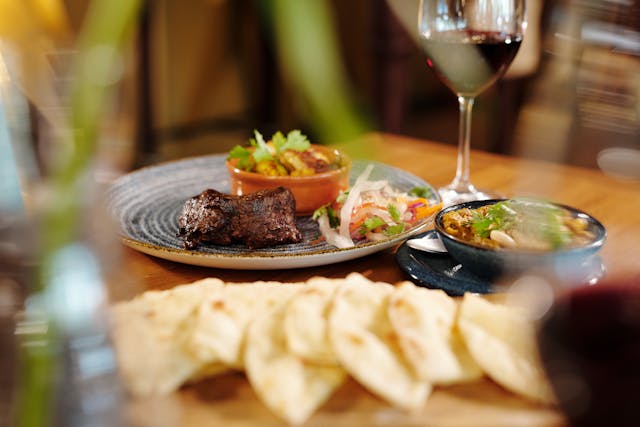The pairing of food and wine has been a romantic journey of taste and senses since ancient times. Different ingredients, cooking methods, wine types and tastes are intertwined to create an ever-changing taste experience. What follows is a journey of discovery in search of the best taste companions, designed to lead you to discover those unforgettable pairings.
1. Understand the basic matching principles
Taste coordination: The taste of food (such as greasy, light, sour and sweet, etc.) and the taste of wine (such as mellow, refreshing, dry and sweet, etc.) should be coordinated with each other. For example, greasy grilled meat goes well with rich red wine, while light fish goes well with refreshing white wine.
Complementary Flavors: Food and wine flavors should complement each other, not overshadow each other. For example, pairing spicy dishes with a fruity and sweet wine can neutralize the spiciness and add depth.
Regional culture: Consider the regional cultural background of food and wine. Sometimes traditional pairings can bring unexpected delicious experiences. Such as pasta with red wine, French cheese with champagne, etc.
2. Classic matching cases
Steak and red wine: Steak is rich in fat and the meat is delicious. Pairing it with a full-bodied red wine with moderate tannins, such as Cabernet Sauvignon or Merlot, can neutralize the greasiness of the meat and enhance the overall taste.
Seafood and white wine: The sweetness of seafood complements the freshness of white wine. For example, pairing steamed fish with Chardonnay or Sauvignon Blanc can highlight the freshness of the seafood while keeping the taste fresh.
Desserts and cordials: The richness of desserts echoes the sweetness of cordials. For example, pairing chocolate cake with ice wine or botrytis wine can add layering to the dessert and make the overall taste richer.
Cheese and red wine/champagne: The rich taste of cheese complements the fine bubbles of red wine or champagne. For example, pairing blue cheese with a rich, fruity red wine, or champagne with hard cheese, can bring a unique taste experience.
3. Try innovative combinations
Chinese dishes and Western wines: Try pairing Chinese dishes with Western wines, such as roast duck with Riesling or Bordeaux blends, to create a fusion of Chinese and Western taste experiences.
Vegetarian food and sparkling wine: The lightness of vegetarian food matches the lightness of sparkling wine. For example, cold vegetables paired with Prosecco or champagne can add freshness to the dish.
Fruit and sweet white wine: The sweet and sour fruit complements the fruity aroma of sweet white wine. For example, pairing strawberries with Riesling or Viognier can highlight the deliciousness of the fruit while adding a hint of wine aroma.
4. Summary
Pairing food and wine is an art that requires constant experimentation and exploration. By understanding basic pairing principles, trying classic pairing cases, and having the courage to try innovative pairings, you can discover more amazing taste partners. In this romantic journey of taste and senses, let food and wine jointly interpret wonderful taste stories.

